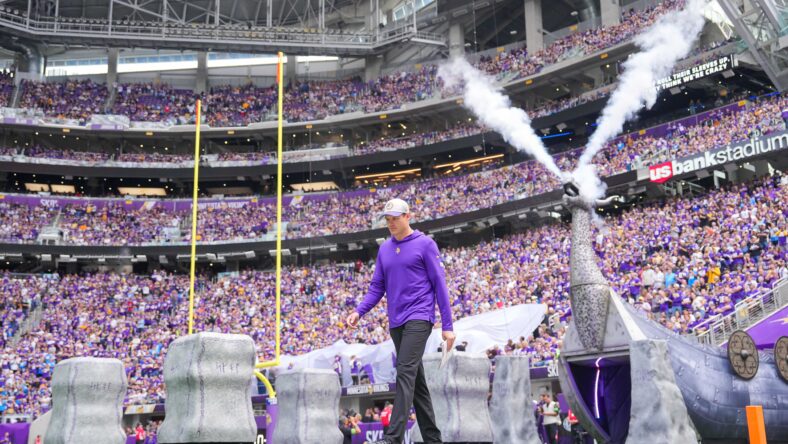How Are Professionals So Bad at Clock Management?

The Minnesota Vikings found themselves on the wrong end of yet another game this weekend. With the Los Angeles Chargers coming to town, Kevin O’Connell’s team needs to get in the win column. Not only did they lose the contest, but the leadership, both under center and on the sidelines, looked inept to end the game.
How Are Professionals So Bad at Clock Management?
Clock management should be among a professional football game’s easiest and most controllable aspects. The time is consistent for every contest, three timeouts are present per half, and scenarios routinely repeat themselves. Despite having highly paid coaches, veteran leaders, and personnel employed solely to manage the clock, Minnesota failed twice on Sunday.

After the Chargers scored a touchdown in the first half and left 47 seconds on the clock for the Vikings, Minnesota opted against simply running the ball and taking a knee. While they could’ve capitalized on the opportunity, quarterback Kirk Cousins failed to position the Vikings for a chance. Passes to T.J. Hockenson completed in the middle of the field made it difficult to reach the sideline and stop the clock. An inaccurate effort on a short pass to end the half was reflective of going out on a whimper.
Despite Mike Williams going down with a knee injury and Austin Ekeler not being available for the contest, Minnesota’s secondary continued to allow Keenan Allen opportunities to beat them. He hauled in 18 passes for 215 yards on 20 receptions. The lack of ability and even worse adjustments on display for Minnesota were disheartening in their own right.

Even as poorly as the game had gone, Brandon Staley gave the Vikings a ripe opportunity to win. Running the ball on 4th and 1 from their own 25-yard line, the Chargers got stuffed, and Minnesota took over. Handed 1:46 on the clock, there should’ve been no reason for the Vikings to be in a tough spot.
This is Minnesota, though.
After a 4th down play put the Vikings on the 6-yard line with nearly 30 seconds remaining, Cousins, O’Connell, the clock management employee, and no one else on the sidelines decided that the opportunity to breathe was present. Minnesota lollygagged to the line. Cousins didn’t spike the ball. O’Connell didn’t make sure his quarterback knew what was sensible. Instead, Cousins snapped it quickly, forcing a ball to Hockenson with three defenders around him.
The pass was tipped and ultimately picked off, ending the game.
Yet again, an entire stadium of fans, droves of Madden players, and anyone inclined to the sport saw what a logical play would have looked like. Spiking the ball would’ve reset the play clock, given Minnesota ample opportunity for a few shots at the end zone, and allowed Cousins to settle himself.

How these types of miscues happen on a weekly basis across the most-watched sport in America is mind-numbing. You can certainly have less talent than your opponent, or you could find execution difficult, but shooting yourself in the foot with routine mistakes that are entirely preventable should not be a continued problem.
From O’Connell to his quarterback and everyone in between on Sunday, the implementation of simple clock management was mind-numbingly fumbled.
Ted Schwerzler is a blogger from the Twin Cities that is focused on all things Minnesota Twins and Minnesota Vikings. He’s active on Twitter and writes weekly for Twins Daily. As a former college athlete and avid sports fan, covering our pro teams with a passion has always seemed like such a natural outlet.

You must be logged in to post a comment.